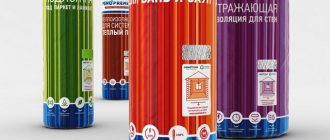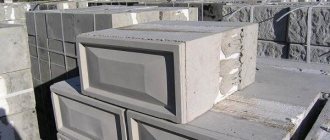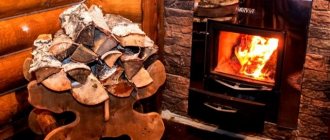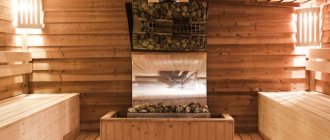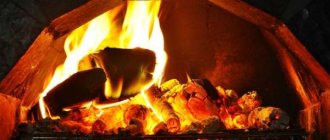What it is?
Information about its characteristics will help you find out whether asbestos is harmful. As you know, this name hides several materials belonging to silicates of natural origin. Huge reserves of one of them, chrysotile, were discovered in the Urals. This mineral has a fibrous structure: thin tubes form flexible bundles. For this reason, it has excellent technological characteristics:
- fire resistance;
- low electrical conductivity;
- heat resistance;
- significant strength;
- resistance to the influence of ozone, oxygen, radiation.
Important! After processing, fine-fiber chrysotile fluffs up greatly and acquires a unique ability to absorb other chemicals.
Asbestos or mountain flax is the collective name for a group of fine-fiber minerals from the class of silicates Source focus.ua
In nature, there are 2 types (different in structure, shade, composition) of asbestos: amphibole, chrysotile. The first one is considered more dangerous, which is why its production and use are now prohibited everywhere. Further in the article the harm of chrysotile asbestos to health will be considered. Despite the fact that such a mineral is less dangerous, it is considered a carcinogen with a special mechanism of action.
The main feature of chrysotile asbestos (asbestos crumbs) is its ability to withstand high temperatures: it does not lose its properties even at +500°C, and begins to melt at + 1500°C. Source rti.group
Cracks due to temperature changes and can even explode
Asbestos pipes began to be produced back in the USSR. And although they can now be found on many houses as a chimney, they were originally produced for the reclamation of agricultural land. Previously, they were successfully used to arrange the upper part of the chimney. The main disadvantage of the material is that it easily cracks due to temperature changes. This can happen when a boiler or furnace heats up quickly. The presence of cracks in the chimney is a risk of fire.
In addition, there are many stories about asbestos pipes exploding. You will say how this can happen if the material can withstand up to 300 degrees. An asbestos chimney pipe is never installed immediately next to a stove or boiler, since the combustion products cool down when rising. But the walls of the asbestos pipe are not smooth enough, so soot easily settles on them. If cleaning is not carried out in time, the soot may ignite. If it burns, the pipe may break into pieces.
Where is it used?
Due to its low cost and unusual properties, asbestos is widely used in many industries:
- mechanical engineering;
- construction;
- pharmaceuticals;
- textile, chemical, aviation industries;
- rocket science.
Chrysotile is often used in the manufacture of:
- facade panels;
- rubber elements;
- roofing (slate);
- all kinds of products for the construction of walls;
- thermal insulation materials;
- sealing agents;
- asbestos technical parts;
- protective layers;
- bricks;
- adhesives, mounting, lubricants and other compounds.
Attention! The harm of asbestos to human health largely depends on the frequency of contact of the respiratory tract with harmful asbestos dust.
The addition of asbestos to various building materials gives them high fire resistance and excellent thermal insulation properties Source o-remonte.info
Fireproof wall coverings
If the wall of the room is directly adjacent to the surface of the stove, this leads to excessive heating of the wall, which can cause a fire. To avoid fire, the walls are sheathed with non-flammable materials.
Reflective lining
Good results are achieved by cladding that combines non-flammable thermal insulation materials and metal sheets. First, thermal insulation is attached to the wood of the wall, and sheets of metal are installed on top of it. For the outer layer, either stainless steel or galvanized is used. However, from the point of view of environmental friendliness, it is better to take stainless steel , since there is evidence that when heated, galvanized steel begins to release toxic substances.
To make the resulting cladding more effective, the steel sheet must be polished to a mirror finish. In this case, heat rays are reflected from the metal, and the wall heats up even less. In addition, the steam room receives reflected heat flows, which are softer and more acceptable to humans than those that come directly from the stove.
A number of thermal insulation materials are used for cladding:
The general scheme for using sheathing looks like this: wall - gap (2-3 cm) - thermal insulation (1-2 cm) - sheet of metal. This allows you to reduce the distance between the stove wall and the wall of the room to 38 cm.
The gap in the described circuit is ensured by ceramic bushings that do not heat up. If the room does not allow even the specified minimum distance between the stove and the wall to be achieved, the cladding is made with two layers of thermal insulation. A gap of 2-3 cm is left between them using ceramic bushings. Stainless steel is attached on top of the outer sheet.
Cladding with cladding
To give the steam room a more aesthetic appearance (bare iron on the wall does not look very attractive), the walls can be covered with ceramic tiles. However, if it is placed directly on wood, there will be no insulation. Therefore, the following cladding scheme is used: wall - gap (2-3 cm) - fire-resistant layer - tiles. In this case, it is allowed that there be at least 15-20 cm between the wall of the stove and the wall of the room.
Wall cladding with cladding in the bathhouse
The following materials are used for the fireproof layer:
- Fireproof drywall is drywall that has fiberglass added to it. This material is not afraid of thermal radiation and does not deform under its influence;
- mineralite is an effective fire-resistant material. Minerite fireproof boards are characterized by high moisture resistance, do not collapse or rot;
- glass-magnesium sheet is a material made from fiberglass. Magnesium substance is used as a binder. It has good sound and heat insulation, resistance to moisture and temperature changes.
Effect on the body
As a rule, chrysotile poisoning develops over a long period of time. As a result of its accumulation in organs, various structural disorders occur. When such a mineral is mechanically destroyed or during its manufacturing process, asbestos dust is formed. After inhalation, the fine fibers penetrate into the lungs. But due to the property of chrysotile to dissolve intensively in an acidic environment, its excessive accumulation in the organ requires prolonged contact with dust particles. Even under such circumstances, the health hazards of asbestos sometimes become apparent only after ten or more years.
As a result of mechanical irritation of the respiratory system, bronchitis most often develops. But there is also a possibility of asbestosis, since dust settled in the lungs provokes scarring in the sensitive tissues of the organ.
If we consider how asbestos is harmful in terms of oncology, it is worth noting: chrysotile itself is not an aggressive carcinogen, it only contributes to the harmful effects of other carcinogenic substances on healthy cells of the body. There is an assumption that such a mineral provokes the occurrence of a rare cancer - mesothelioma.
According to recent research by scientists, the likelihood of developing cancer due to chrysotile in production is approximately 1 in 100,000 people. This information allows you to conclude how harmful asbestos is and whether it should be avoided.
Important! After the adoption of new acceptable standards and tightening of sanitary rules at Russian asbestos mining enterprises, no cases of asbestosis have been recorded over the past two decades.
It has been established that asbestos emissions are directly related to such a rare disease as mesothelioma (a type of cancer) Source static.tildacdn.com
Maintenance difficulties
The only way out is to constantly clean the chimney (see How to clean a chimney). But unlike brick and metal pipes, chimneys made from asbestos-cement pipes are difficult to clean due to the difficulty of installing inspection windows.
The main problem is condensation
Skeptics may argue that this explosion condition only applies to older furnaces and boilers. Modern boilers have increased efficiency, as a result of which their outlet temperature is much lower, 100 degrees, and an asbestos pipe for the chimney is quite suitable. There is a reason for this statement. But let’s repeat, let’s not look at the issue superficially.
Indeed, all modern boilers have good efficiency, and this is wonderful. This means that this necessary heat does not go down the chimney, but is mostly used to heat your home.
As you know, for normal combustion of fuel a supply of oxygen is necessary. Oxygen is supplied along with outside air. Oxygen is supplied along with outside air. Air is supplied by draft. But what affects the quality of traction?
Of course, the quality of the chimney. Many people believe that the chimney is designed to remove combustion products. But it is important to know that, by removing combustion products, the chimney provides a flow of fresh air into the firebox, which ensures normal combustion inside the stove, boiler, or fireplace. This is how traction is formed. The greater the temperature difference in the pipe with the outside air temperature, the better the draft.
The greater the temperature difference in the pipe with the outside air temperature, the better the draft.
Many people have encountered this problem. The old boiler worked fine with a regular brick chimney. It's time to change the boiler. They installed an ultra-modern, economical, high-efficiency unit - and the problems began.
Not only does the boiler not work as stated in the documentation, but on top of everything else, unpleasant-looking stains began to appear on the walls where the chimney pipe runs, and the beautiful brick pipe installed on the roof began to crumble.
Condensation stains
What is the reason? There is only one answer - condensation. Anyone who thinks that an asbestos chimney pipe in this case would be at its best is deeply mistaken. How can this be, because asbestos-cement pipes are not afraid of water, they are designed for this. Everything is correct for water. But the condensate in the pipe is not exactly water. Or rather, not water at all. Condensation in a chimney is a very aggressive solution of a mixture of combustion oxides and moisture, which destroys the chimney material.
Prevention of poisoning
Today, the answer to the question of whether asbestos is harmful to health is already obvious and beyond any doubt. Therefore, it is extremely important to remember that the use of amphibole mineral is strictly prohibited under any circumstances. When using the more common chrysotile, the following instructions must be observed:
- when coming into contact with asbestos materials, use protective equipment;
- waste and dust should be stored in a sealed container, then disposed of using a special technology;
- use only dense products: they should not crumble;
- the mineral cannot be sprayed in the air;
- periodically monitor the permissible level of asbestos fibers in the production area;
- undergo regular medical examination.
When working with building materials that contain asbestos, it is extremely important to protect the respiratory system Source laboratoria.by
Metal protective screens
On the construction market, the most common metal protective screens are made of steel or cast iron. Many manufacturers of iron furnaces provide thermal insulation for their products, providing them with special casings.
Choosing protective screens is quite simple, because depending on the side of the furnace to be insulated, you can purchase a front or side panel. Installing such screens will also not cause difficulties, because the manufacturer provides special legs that can be easily attached to the floor.
Next we should talk about the installation rules. The panels themselves are installed at a distance of 1-5 cm from the stove, but a distance to the adjacent wall is also required. Protective screens reduce the radiated temperature to 80-100°C, which allows them to be installed 50 cm from a parallel wall.
How to replace asbestos
Multiple studies prove that the use of chrysotile is undesirable. To replace it, it is recommended to use the following building materials:
- extremely heat-resistant asbestos boards can be replaced with thermal protection made of silica, basalt panels, mullite-silica wool;
- Minerite is perfect for decorating fireplaces;
- slate is easily replaced with safe, more durable metal tiles and corrugated sheets;
- Facade asbestos-cement products can be replaced with similar fiber-cement products, the latter are considered less harmful.
Any asbestos product can be found with a safe and reliable replacement that will have similar characteristics. Source xn—-dtbegn3a5abh8i.xn--p1ai
When heated, the health hazards of asbestos do not increase. But experts do not recommend using it for arranging fireplaces for a completely different reason. Decorating home heating structures with such a mineral is tantamount to containing a carcinogen inside a living room in a completely open state. At the same time, the likelihood of releasing harmful asbestos dust into the environment increases significantly. You should also refrain from using asbestos in the construction of a bathhouse. Instead, you can purchase foil-coated basalt wool.
At first, chrysotile intoxication is not noticeable at all. Its negative consequences are often observed many years later, when a person is diagnosed with dangerous diseases. Therefore, you should not neglect your health; you should listen to the recommendations of specialists, protect yourself and your loved ones from hidden dangers.
Advice! The use of asbestos-containing products in domestic conditions should be reduced as much as possible. When this cannot be avoided at all, it is necessary to carefully check whether building materials are certified for safety. All of them must be subject to wet processing, as well as disinfection using special chemical compounds.
Despite the fact that asbestos is recognized as a dangerous carcinogen, builders sometimes continue to use materials containing it Source golos.ua
Circumstances of using asbestos pipes
However, the use of this material continues. And this happens due to its low cost and in cases where the temperature of the flue gases does not exceed 200–250 o C. Such conditions are typical for the operation of gas thermal units. It is also important that when burning gas fuel, the formation of solid non-combustible particles occurs more slowly than when burning wood. A similar temperature regime of flue gases is also inherent in pyrolysis solid fuel furnaces, but they are characterized by the formation of a large amount of condensate, which is destructive for asbestos pipes.
It is allowed to construct only vertical sections of the chimney from asbestos pipes, which significantly reduces the possibility of their use even with economical gas boilers
When installing asbestos pipes on a chimney, the following circumstances must be taken into account:
- When installing an independent smoke exhaust system, asbestos pipes are used only when installed through transition sleeves between the firebox and the chimney.
- When installing a chimney on the outside of the house, special sleeves and adapters made of the same material are used for installation.
- Such products are also used to lengthen the existing chimney when there is insufficient draft in the furnace.
Asbestos pipes can be used to build up a chimney in areas of low temperatures of exhaust gases and in the above-roof part with insufficient draft
- Asbestos cement pipe can be used as a liner for an existing brick chimney if the brickwork begins to deteriorate. The same lining can be used in the construction of a brick chimney.
- Installation of asbestos pipes is carried out exclusively on brickwork or reinforced concrete base.
- Passing the chimney through the ceiling is only possible when using a fluff.
When passing through the floors, it is necessary to install heat-insulating structures - fluff and otter - At the intersection of the chimney, an otter device is required.
- Pipe joining is done only with high-quality couplings with an asbestos cord running along the thread as a seal.
- Insulation of an asbestos chimney is mandatory. It is made by covering the pipe with basalt wool and a casing made of galvanized metal. It can be tied together with wire or strip ties of a special design.
Video: what happens when an asbestos chimney pipe explodes
Fire protection of the furnace
Modern metal stoves are mounted on a foundation, while sheathing the walls on the back and sides with sheets of the same material. If you cover the stove yourself with only metal, its appearance will not be very aesthetic. It is better to make external masonry with red brick, which insulates the stove from fire and retains heat in the bathhouse.
Due to the fact that asbestos releases toxic substances at elevated temperatures, it is not recommended for use in a steam room. Natural felt is considered harmless and is also a good insulator. In terms of price, this material is more expensive than asbestos sheets, and when smoldering it emits a specific smell (felt does not catch fire), which can be immediately felt.
If you intend to install the stove on a wooden floor, then first it is better to lay felt material in a couple of layers, then lay brick in three rows. For walls and floors, it is recommended to lay metal sheets as an insulator, the height of which varies from 50 to 70 cm.
By following all our recommendations correctly, you will extend the service life of the entire smoke exhaust structure and protect it from fire. And you will no longer have questions about how chimney pipes are wrapped.

